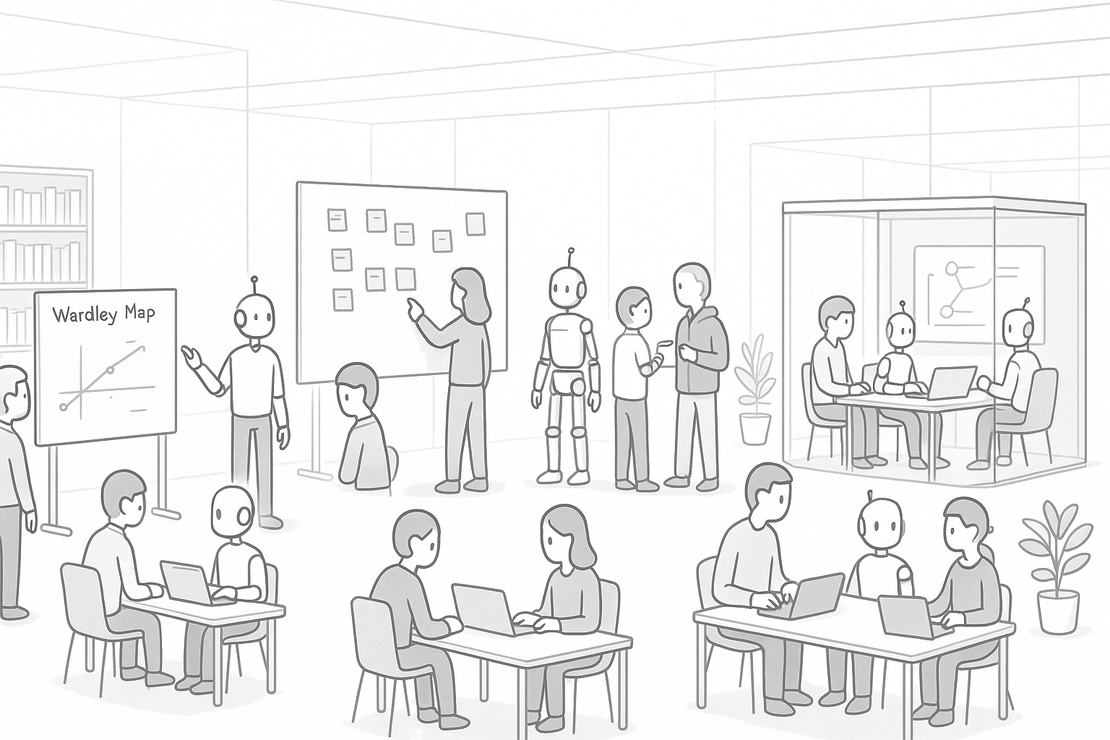
My perspective on Sociotechnical Architecture in Digital Ecosystems
Table of Contents
The state of Digital Transformation in Enterprises
Sociotechnical books, patterns, techniques, and frameworks have existed for many years. But they often weren’t labeled that way, and they didn’t get much attention outside the Domain-Driven Design (DDD) community. This approach has appeared in books, but rarely as the main focus. Too often, IT books exist mainly to sell certifications, training, or consulting services.
As a result most organizations trying to digitize and transform into digital value chains — like SaaS, Digital Services, and Digital Platforms — got sidetracked by the agile industrial complex (which I’m not a fan of). Old lessons and industry heuristics were often forgotten because leaders believed a single PDF (the Scrum Guide) could fix their business models.
Software engineering has always been complex.
It became even harder when we moved to distributed systems (DDD, SOA, Microservices, Event-Driven Architecture, Cloud-native Architecture). Ironically, these approaches are the best way to manage complexity by breaking problems down.
I’ve often struggled to keep clients focused on the essentials:
- A transparent and intuitive Vision & Strategy
- A plan for an evolutionary approach that is convincing to the customer and sustainable for their engineering workforce
- An organization that is setup to deliver compelling digital services that can evolve and grow based on customer demand
- A technical system that achieves the qualities that the customers need while not hindering the flow of work in the organization because of overwhelming complexity and
From an organization development perspective
You have to convince a lot of experienced people that they might be in a state of “Unconscious Incompetence” about what is different when former “Developers from Internal-IT” start building services for the endcustomer and replace “non-digital” subject matter experts. It’s a tough job to convince people that that past success and the patterns that were applied might not work in this journey. A big top-down driven change activity.
But there are also bottom-up activities. Most of “developers” now have to learn “engineering” while most think both disciplines are the same. Also some team-level managers have to learn that they are in reality engineers (requirements engineers, testers, project managers, architects, product owners,…) and might learn to participate in architecture decisions and to some extent gain more technical knowledge.
A tought journey for everyone involved that can only start with accepting that this will result in constant learning, knowledge sharing and putting aside formerly earned medals of honor.
From an engineering perspective
You design architecture based on specific quality goals, make technical decisions, and define DevOps and ITSM processes. These processes shape the skills your teams need and influence team composition. And once you’ve done that, both the architecture and the human system need to evolve together — ready to be re-architected when needed.
My personal journey
I was a practitioner of most of these practices even if I before never heard about it. Good gut feelings that were constantly challenged by my managers and clients. That caused me to read a ton of books, studies and connect to like-minded people. In the end I found out that my gut feelings were most of the time right and that there are a lot of good heuristics to support my decisions. A powerful weapon that helped me create a successful career for many years.
I noticed that there is a name for that discipline, but it was not commonly used… Sociotechnical Architecture… Whenever I published content or went on a conference I used to frame it as “The way we do architecture is evolving” or “collaborative techniques to facilitate complex decision making activities in digital ecosystems”.
In 2019, I started writing my own book about my experience. I paused when I was told by my most favourite authors that another book on a similar topic was almost finished and will be published soon. (Sidenote: That book still isn’t published in 2025. A sign how complex the subject is! I will post a review as soon as I read it!)
About a year ago, I realized that this book is not about the experiences (from a practitioner’s perspective) that I wanted to share in the first place. So here I am — starting again after six years.
This website has now become the platform for my updated thinking where I will try to write my book step by step in public while blogging about my experiences.